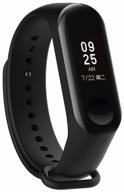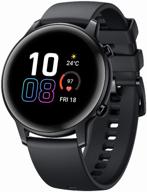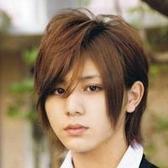
Review on New Nikon 18-105mm Vibration Reduction 📷 Zoom Lens with Auto Focus for Nikon DSLRs by Arata Kichiro ᠌

The quality exceeds all expectations, I recommend to buy.
For those of you too slow to read, let me just say that it's cooler than the regular kit 18-55, and if you can afford it, you shouldn't regret it because you'll be on a different level both technically and aesthetically as a result. All there is to it is that. For those who don't want to mess about with the 18-55mm lens, there is this lens. For consumers who don't comprehend and are presented with the option of a 1 by 1 lens for the first time, sellers can powder their brains because 18-55 is the same as 18-105, with the exception that this is a recalculation for the crop factor. This is due to the fact that 18-105 is the same as 18-55. I personally overheard it twice and interrupted the conversation. For those of you who are still unclear, let me explain: Skipping an 18-55mm lens and digital compact cameras in general results in background blur that is two times worse at a 55/5.6 aperture than at a 105/5.6 aperture. You may calculate the hole's size in millimeters by dividing these figures; this will let you know how much background blurring will be present (18 versus 10 in the kit). By dividing the numbers 55/18 and 105/18, you may determine the zoom indication and get the result. It totals 5.8 as opposed to 3. There is also the possibility of an even more accurate approximation (Is this significant?). The distortions in the corners literally double by 18–55 when there are strong contrasts, whereas in the center it barely limps, which is sufficient. An example of this would be small men walking in the snow. As I have said, the distortions in the corners are far smaller than they are for the range of 18 to 55. I'll elaborate. When shooting in reasonably bright conditions, you can reduce the hole because, at f8 to f11, the edging almost completely vanishes and the sharpness of the edges improves. This is normal for that kind of money. Despite the fact that I included faults, it is calmer here. At this price point, it is present but relatively reasonable and inevitable: at 18 mm, all geometrically correct objects will bend into a "barrel," but only slightly and without greatly distorting the laws of perspective that can be seen with the naked eye. I don't want to exaggerate either the virtues or the flaws, tk. It is present, but at this price point it is quite manageable and inevitable. A reasonable starting price of 30.000 R for the D3000 plus this 18-105 lens, with enough left over for a memory card or a protective filter; if it is insufficient, they ask a lot. Comparable kits are available from Canon, which is renowned for being more customer-friendly, but they are substantially more expensive. There are a lot of folks who are offered 30,000 for an SLR but won't accept any higher, thus this is extremely required. produced in the Taiwanese Republic. Expenses in 2022 will be $0.42.
- It has a good amount of crispness and is likely neither better nor worse than analogs. Its behavior in the corners is occasionally better than the 18-55's, which is a case for choosing it as the primary lens rather than the more common 18-55. The thread on the filters is somewhat wider than necessary; you can wound it anyway you like (for 18mm, a simple protective UV and polarizer does not create vignetting - the frame is wide). A typical plastic petal hood with its own (unthreaded) mount and a purse are both included. You can freely rotate the ring when the autofocus is on. A little sky appeared when I photographed a clearing practically vertically from my feet to the horizon; the 105mm lens also obviously zooms in and blurs, so you should only use it for lengthy trips. 18mm is wide enough for a beginner to not consider more breadth. Who cares? It seems strong and convincing. It is pleasant to the touch and operates gently, producing essentially no more noise than the motor's main component, which had to be audible from the street outside. For instance, taking close-up shots of springtime flowers and buds at 105 millimeters and f5.6 produces an extremely odd background blur. Moreover, in one shot, it appears as though a blurry area wraps around sharp edges as if through a watery eye. Although it is not explicitly stated, this is unusual in the field of optics. I'll let you in on one more little secret: go out to the embankment at night and take a photo of the ever-present Kremlin at f22 aperture from a tripod or place your briefcase on a stone (you'll smear it with your hands anyway). All the lights will transform into stars with rays; those who have a smaller limit of f16 stars will have obvious and, most importantly, natural stars. A 105mm lens can generally be used with an aperture as large as f36.
- It is appropriate to think about the expense first and foremost. drastically different from the years 18 to 55. In my opinion, the pricing shouldn't be the standard $12,000, but rather should be in the range of 8,000 and 10,000. F5 is currently set to 50 mm. The prefix "ED" is nothing more than marketing jargon; do not pay attention to the fact that the color is, in theory, the same as that of the younger brothers of digital compacts. For example, I used the Nikon 24-85mm f/2.8-4D IF AF lens, which excels in color reproduction even when it does not have the ED prefix, but it did not turn out to be a very strong performer in terms of sharpness. As far as I can tell, they installed a low-dispersion ED glass piece in this specific case just for the inscription. It is impossible to describe this lens as cool because of the amount of distortion present in the corners. The stabilizer does its function, however when I initially switched it on, I was unable to distinguish between ON and OFF. 18-55 is not one of the better stubs I've seen. If at all possible, turn it off and only turn it back on when absolutely necessary. This is another reason to lower sharpness in sunny weather. When it is cloudy outside is one situation where this might apply. Professional professionals rarely wear lenses with stubs, and when they do, they rarely give the stub's placement on the lens' body any thought.
New products
Comments (0)
Top products in 👓 Lenses

Canon EF 40mm f/2.8 STM Lens - Fixed Black (6310B002) for US Cameras

76 Review

Canon EF 50mm f/1.8 II Fixed Lens - Discontinued by Manufacturer

93 Review
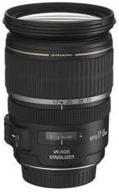
Canon EF-S 17-55mm f/2.8 IS USM Lens - Compatible with Canon DSLR Cameras (Lens Only)

73 Review
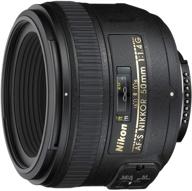
📷 Nikon AF-S NIKKOR 50mm f/1.4G Lens with Auto Focus: Perfect for Nikon DSLR Cameras

76 Review



